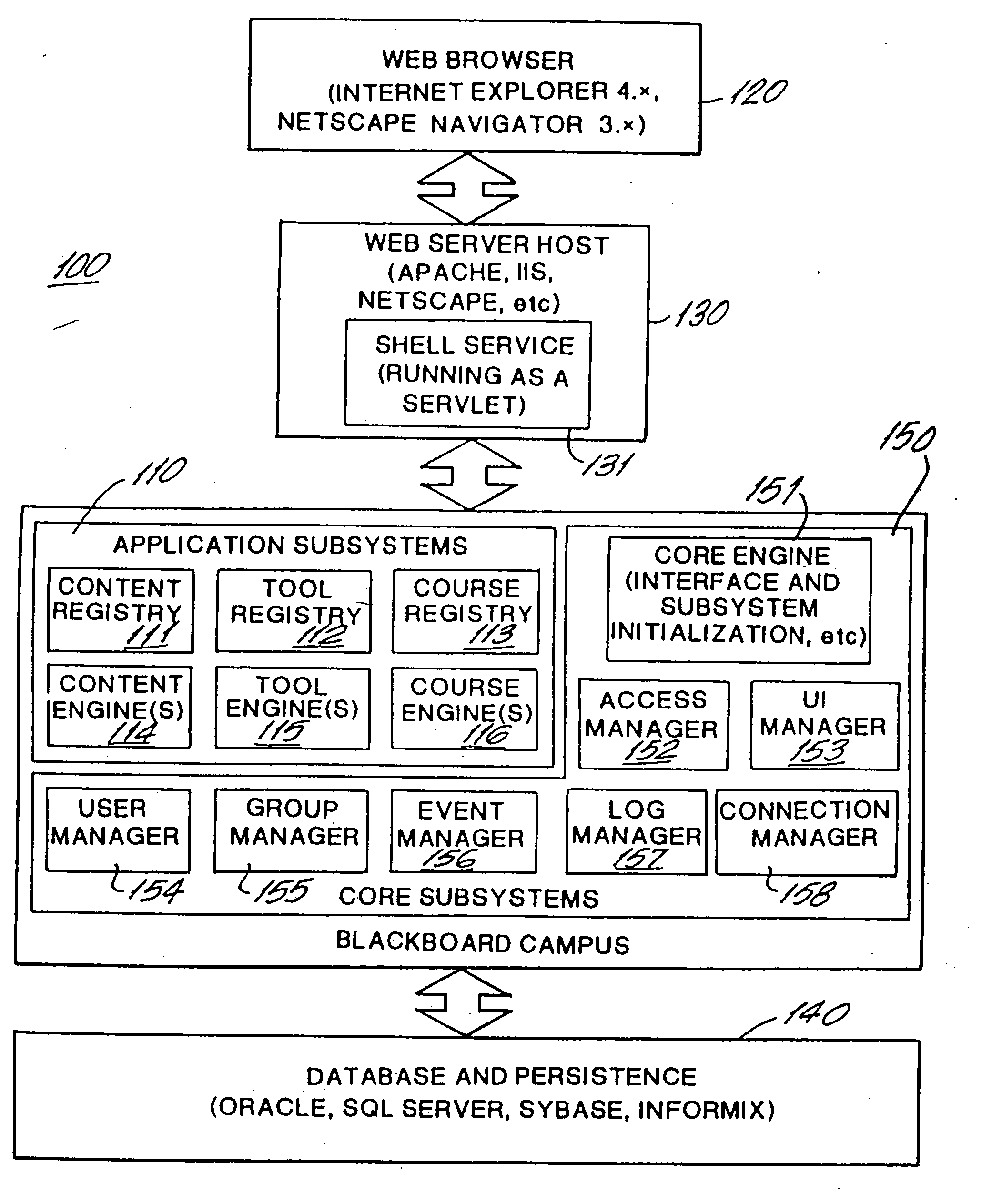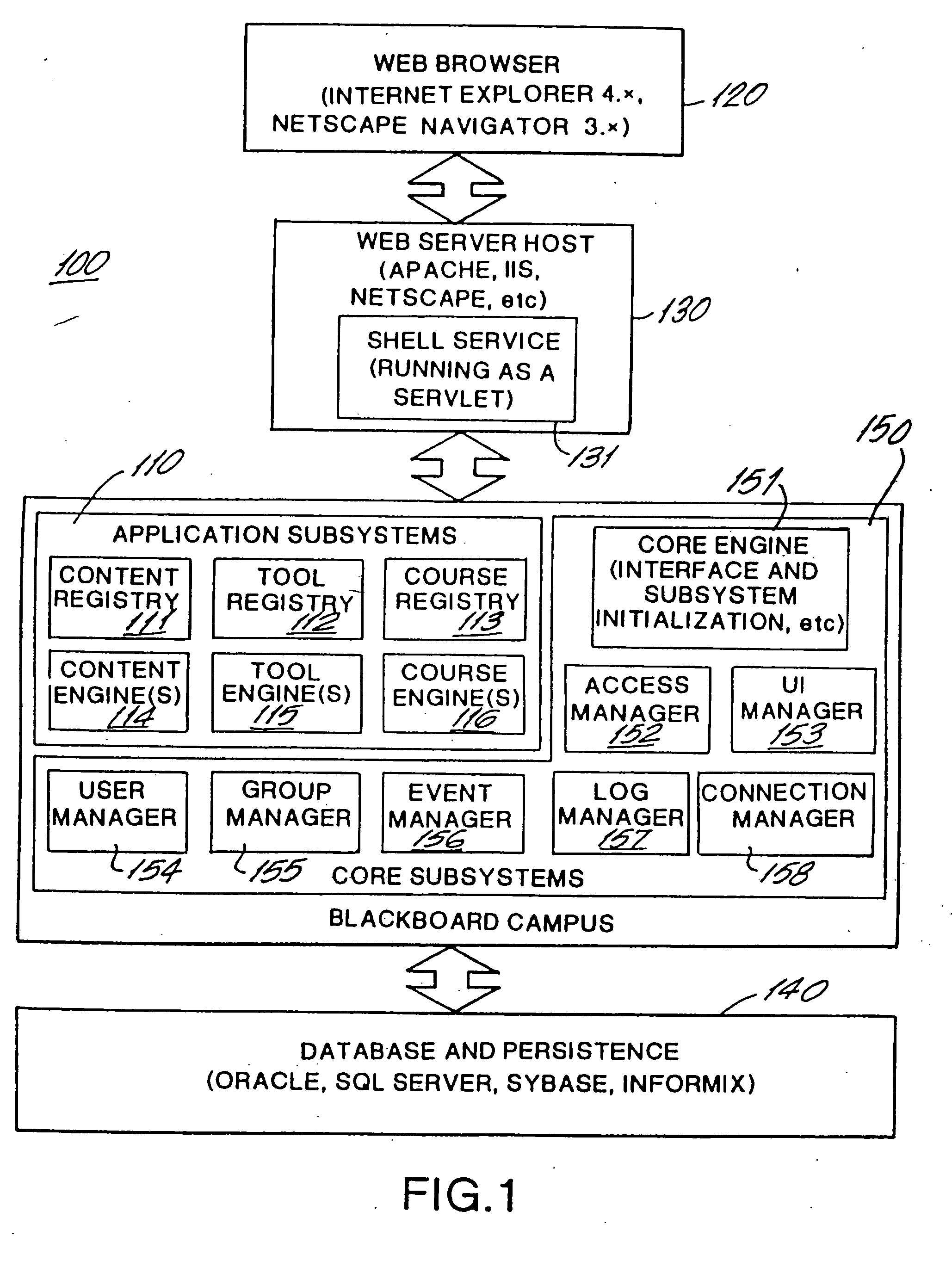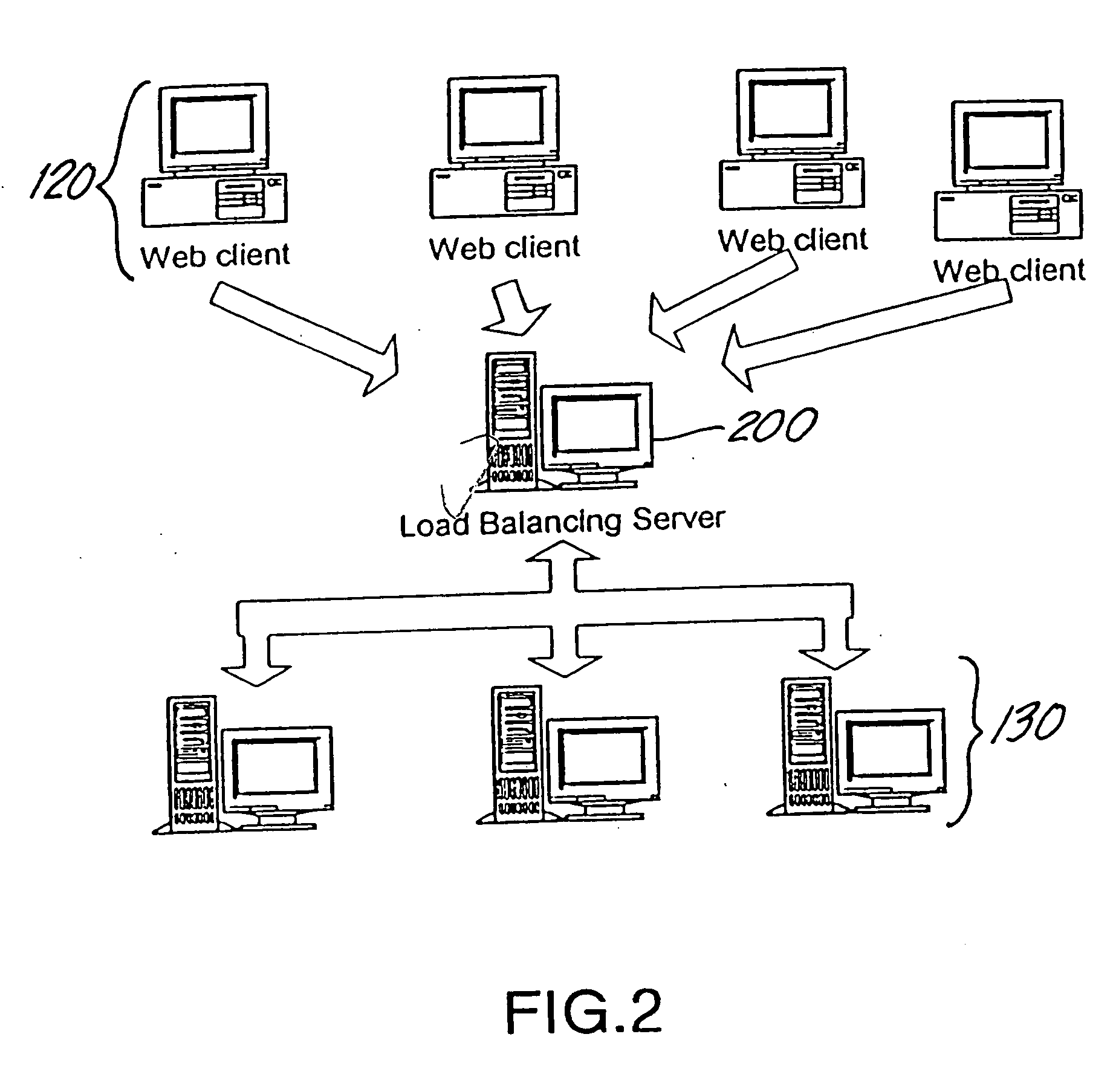Internet-based education support system and methods
a support system and information technology, applied in the field of information exchange systems and methods, can solve the problems of limiting the ability of educators, including educational institutions, private corporations, institutions of higher learning, to reach potential students, and many prospective students are deprived of receiving instruction from other, possibly better-qualified instructors or institutions. , to achieve the effect of convenient on-line registration and tuition payment, easy interface, and simplified transition to automated systems
- Summary
- Abstract
- Description
- Claims
- Application Information
AI Technical Summary
Benefits of technology
Problems solved by technology
Method used
Image
Examples
third embodiment
[0091] The third embodiment is a third tier system, known as the Advanced Course & Portal Manager. This embodiment incorporates the complete end-to-end “e-Learning” solution. In addition to the Course and Portal Manager, this third tier provides advanced Java-based API's for unifying diverse online campus systems into one integrated platform allowing for user-driven single log-in service delivery, as well as capabilities that allow each school, department or campus within the institution to maintain its own customized environment. Thus, this is the fully functional embodiment that includes all the features and functionality of the first and second tiers and adds certain integration technologies that allow integration of the invention with existing enterprise systems, such as for downloading student databases, etc. as defined further below. This includes a snapshot user management API, an event-driven (real-time) user management API, an end user authentication (security) API, and a n...
fourth embodiment
[0093] the invention is operated as a publicly available web site on the Internet, that may be accessed by anyone, whether they are affiliated with an institution or not. In this embodiment, anyone on the web can create a course, enroll in a public course, etc. as explained further below. This provides for widespread dissemination of tools and utilities that enable anyone to generate his own course that can be taken by virtually any student.
[0094] As further explained herein, the course management tools featured in the present invention allow instructors to monitor, control and customize their course web sites from a web browser interface. The Course Control Panel provides a robust and easy-to-use interface for such course management. The system allows instructors to customize the names of course web site navigation buttons to suit their needs and requirements. The system also allows the instructor to add or drop individuals or groups of students from a course as required. The syste...
PUM
 Login to View More
Login to View More Abstract
Description
Claims
Application Information
 Login to View More
Login to View More - R&D
- Intellectual Property
- Life Sciences
- Materials
- Tech Scout
- Unparalleled Data Quality
- Higher Quality Content
- 60% Fewer Hallucinations
Browse by: Latest US Patents, China's latest patents, Technical Efficacy Thesaurus, Application Domain, Technology Topic, Popular Technical Reports.
© 2025 PatSnap. All rights reserved.Legal|Privacy policy|Modern Slavery Act Transparency Statement|Sitemap|About US| Contact US: help@patsnap.com



